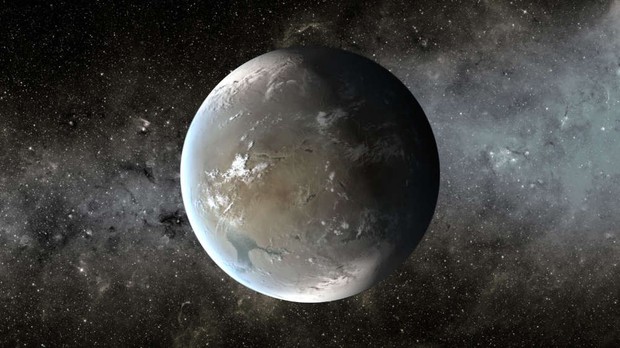TESS is NASA’s latest planetary fighter, launched into orbit in April. And now it has paid off.
On April 18, 2018, NASA launched the most modern survey satellite orbit. It’s TESS – a real planet hunter. Its mission is to study more than 200,000 of the brightest stars in the sky and identify the surrounding planets.
And so far the results have appeared. TESS has found traces of the first planet named Pi Mensae c. Specifically, more evidence is still needed to verify its existence, but NASA is confident in this result.
“This is really good news,” said Natalia Guerrero of MIT, a member of the TESS group and co-author of the report. “Pi Mensae is exactly the kind of planet TESS was designed to seek out.”
However, this planet is not as small as we think it is. “Small” here compared to the gas giants TESS should find. Compared to Earth, Pi Mensae c is 2.1 times larger in size and 4.8 times larger in mass. It revolves around a golden dwarf in 6.27 days and is 60 light years from us.
NASA has said this planet could be a super Earth – a name for rocky planets with more mass than Earth. And because it orbits so close to its host star, the possibility of the planet’s surface having life is nearly impossible.
With the Pi Mensae star-planet system, this is the second time that we have found a planet here. Earlier in 2011, NASA confirmed the existence of Pi Mensae b, a planet 10 times the size of Earth, with an orbit of 5.7 years. This made them wonder how many more planets remain on this star system and why there are such differences.
Previously, TESS was used to redefine 17 exoplanets (exoplanets). But this time it’s the first brand new planet, and it’s so special. If you don’t know, the first planet Kepler found is Kepler-4b, the size of Neptune in the solar system.
“This is a very important finding for the team as it shows that TESS is capable of doing its job well,” said Avi Shporer, co-author of the report. “TESS is expected to find thousands of new exoplanets, so there will be more surprises next year.”
Currently, TESS is on a four month trial period. Over the next two years, an additional 20,000 planets are expected to be found, with distances to Earth ranging from 30 to 300 light years.
It’s also not the only TESS finding published this time around. There is another planet similar in size to Earth, named LHS 3844b. It revolves around the star LHS 3844 50 years from us, and at a distance so close that nothing can exist.



